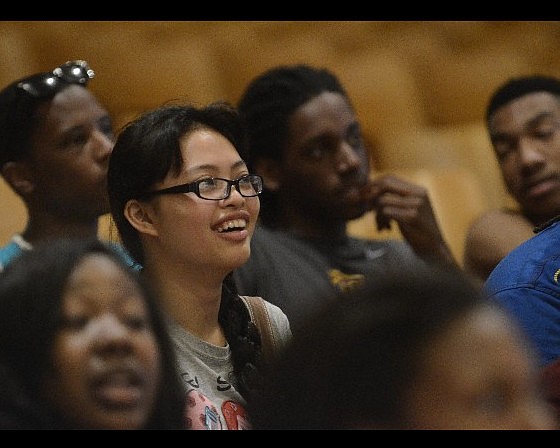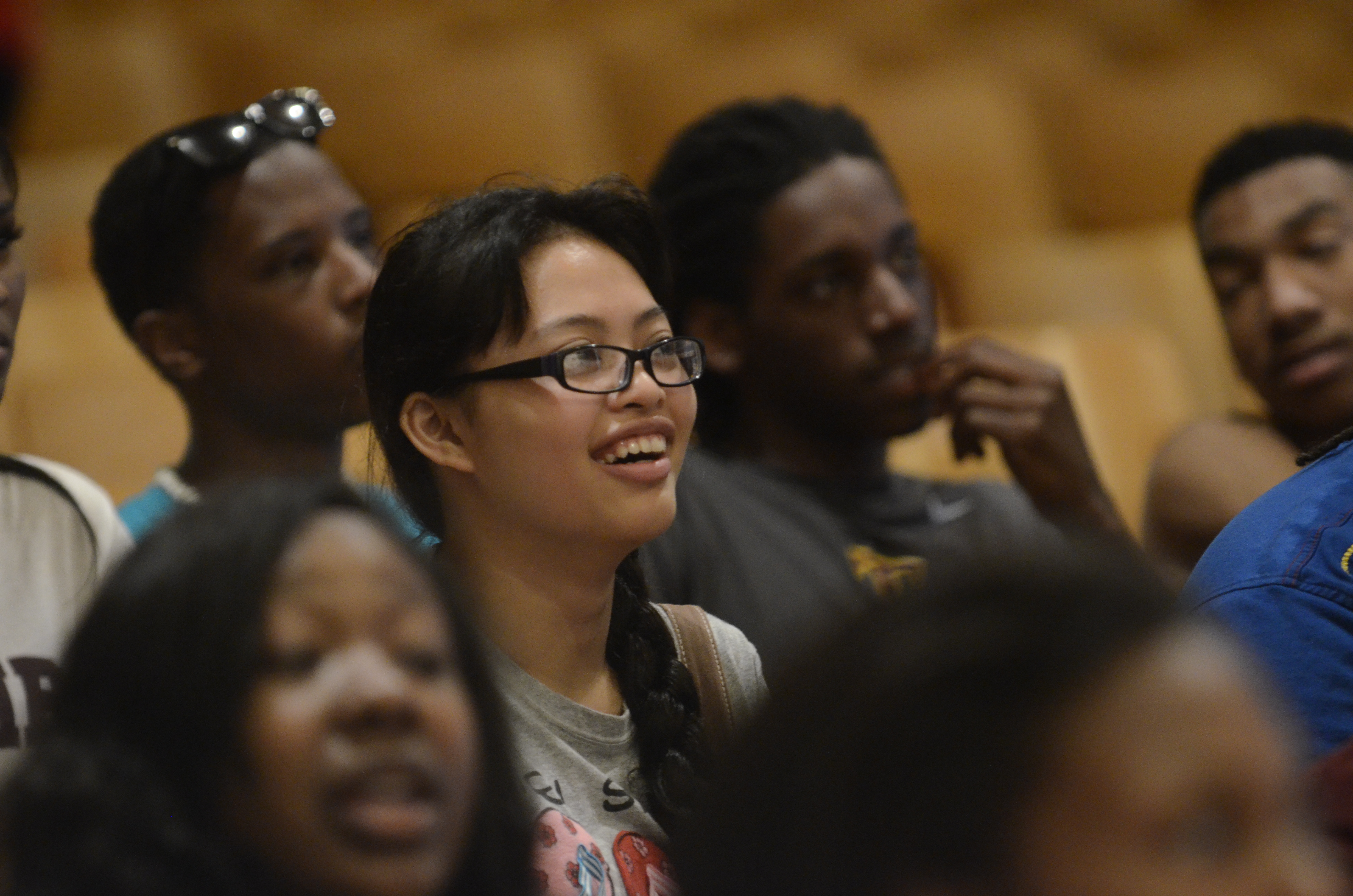FAST FACTAs of October, Hamilton County Schools enrolled students from 45 countries. Students across the county spoke more than 75 languages.Source: Hamilton County ESOL Department
It's not just black and white anymore.
In Hamilton County Schools, the makeup of classrooms is changing rapidly. While the share of black students hasn't changed in 15 years, the number of minority students is booming.
No longer do teachers look out and see almost exclusively African-Americans and Caucasians. There are now students from Bosnia, South Sudan and Vietnam, among dozens of other nations. But much of the change is driven by Hispanic and Latino students.
In 2000, the school district was about 65 percent white. Now it's 58 percent white.
Fifteen years ago, fewer than 500 Hispanic or Latino students attended school in Hamilton County, according to school system records. Now more than 3,700 are enrolled.
Much of the influx is happening in schools on the county's southern areas, in places like East Ridge and East Lake. Hispanics now make up 72 percent of the student body at East Side Elementary.
But the change extends even to suburban schools. Fewer than half the students at East Brainerd Elementary are white. And nearly 40 percent of students at Hixson Elementary are racial minorities.
The local trend is indicative of shifting demographics across the state and nation. A 2012 University of Tennessee study found the Volunteer State had the third-fastest-growing Hispanic population in the country. And demographers expect the current school year to be the last in which a majority of American public school students are white.
That creates academic challenges as schools not only try to get students academically proficient, but in some cases to teach them a whole new language.
"Those kids are our kids," said Hamilton County school board member Donna Horn.
Students who immigrate here will likely remain in the community, Horn said, so schools must help them become contributing members of society.
"If we don't give them the opportunity of a quality education, the future is written for them," she said.
•••
Tyner Academy, for years a mostly black school, will graduate its first-ever Latino valedictorian this week as schools across the county hold graduation ceremonies today and Saturday.
Johnni Orozco, whose parents came from Mexico, is the first in his family to graduate high school and will be the first to go on to college.
Early on, he said he felt odd being among the handful of Hispanics in a school that was more than 90 percent black. But he eventually made friends, in the classroom and on the soccer team. Now, he doesn't notice the racial split, he said.
"It was weird. But you get used to it," he said. "It doesn't make a difference anymore."
Principal Carol Goss said the growing diversity has helped round out instruction. The curriculum doesn't change, but students from various cultures bring different perspectives to classroom discussions and debates.
Five years ago, there were four Hispanic students at Tyner, records show. Now there are more than 40.
"It is changing and it is changing quickly," Goss said.
Other nationalities are represented, too.
Gianna Liao moved to the school just three years ago from the Philippines. Her dad was already working here as a sales associate at Walmart. She had taken English classes in the Philippines, so the academic transition wasn't all that difficult -- she finished her three years here as the third-ranking member of the graduating class.
Fitting in socially was more challenging.
"It was kind of hard making friends," she said. "Just the whole environment was different."
To meet the growing wave of non-English speakers, Hamilton County has steadily increased its ESOL program -- short for "English for speakers of other languages." The program has about 50 full-time teachers and about 2,500 students -- a number that fluctuates as students reach English proficiency and no longer need the classes or new students enter the program.
About 60 students are at East Ridge Middle School at any given time.
Tennessee law doesn't allow schools to provide texts or tests in any language other than English. So come time for standardized assessments, ESOL students often underperform, because they can't understand the tests.
"They just do it. Everybody takes the test in English," said Principal Steve Robinson. "And if you don't understand English, you do poorly."
Most students in the ESOL program are Hispanic, with Guatemalans representing the largest share.
That presents unique challenges, Robinson said, because public education is extremely limited in Guatemala. And many students come speaking Mayan dialects, not Spanish.
"They're coming here not only not knowing the language, they're not even schooled in their own culture," he said.
Marina Pershterianu, who runs Bridge Refugee Services, said Hamilton County has integrated foreigners well. Before working at Bridge, which helps to resettle refugees in the United States, Pershterianu taught in Chattanooga and in her native Ukraine.
She said she's impressed with the local ESOL program, especially the extra summer school program for ESOL students. Teachers and parents alike have been welcoming to students from Iraq, Cuba, and Sudan, among other nations, she said.
"They understand that diversity only brings advantages to their children," she said. "There's absolutely no disadvantage to having the entire world represented in your child's classroom. You can only learn from it."
Contact staff writer Kevin Hardy at khardy@timesfreepress.com or 423-757-6249.


